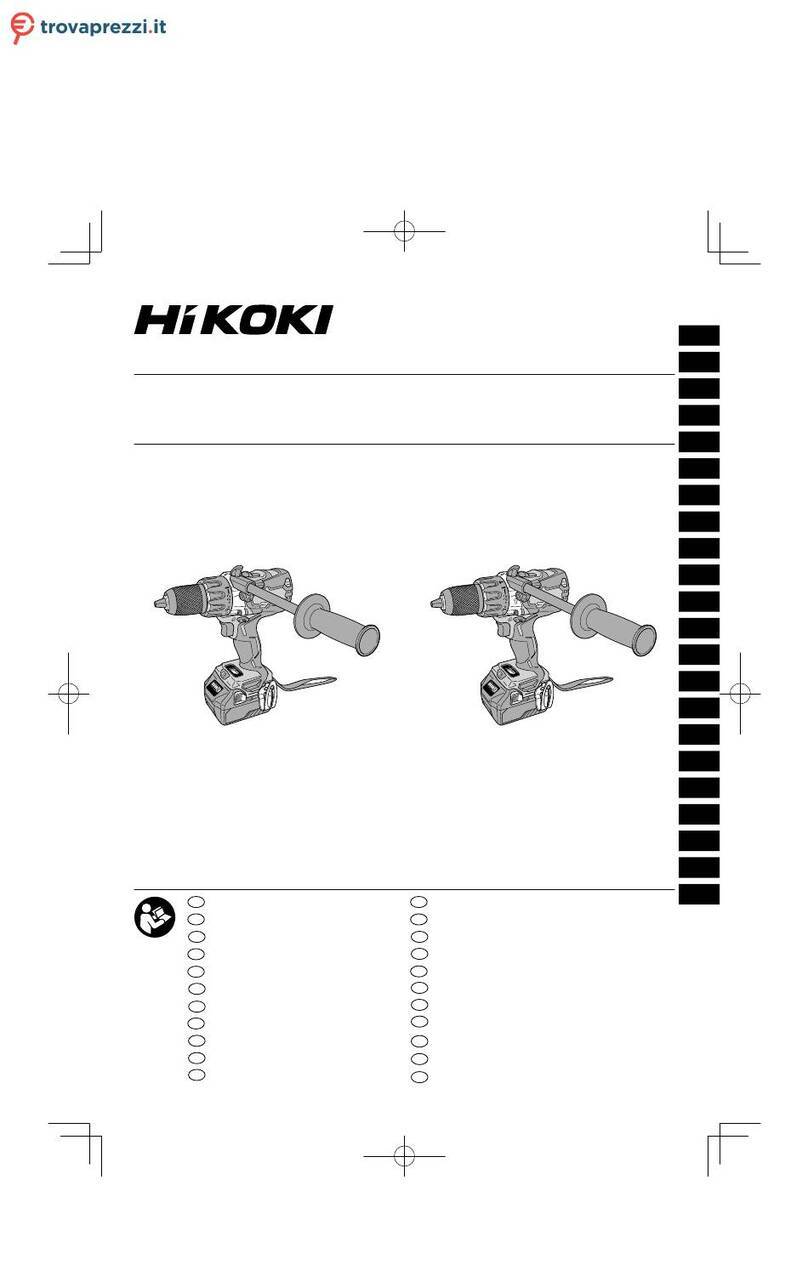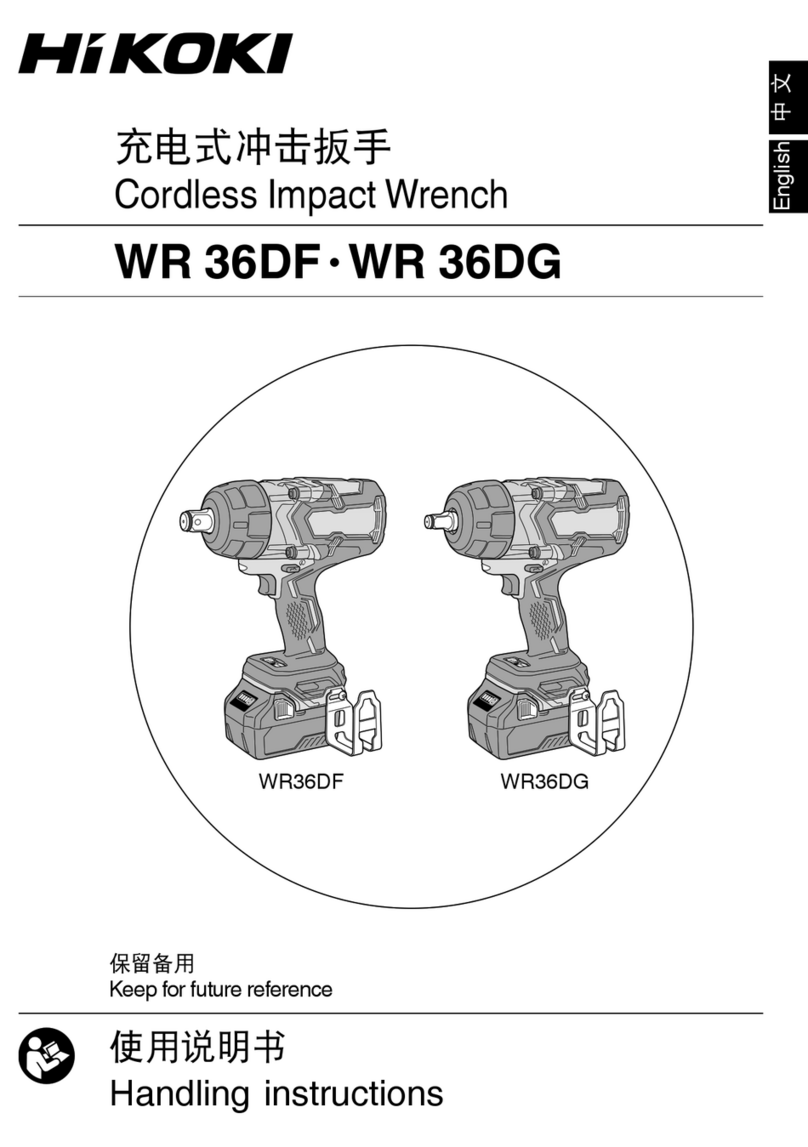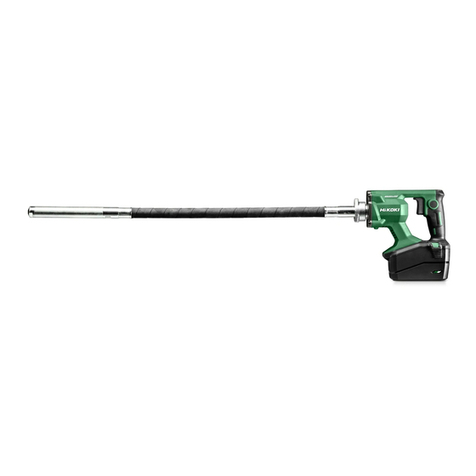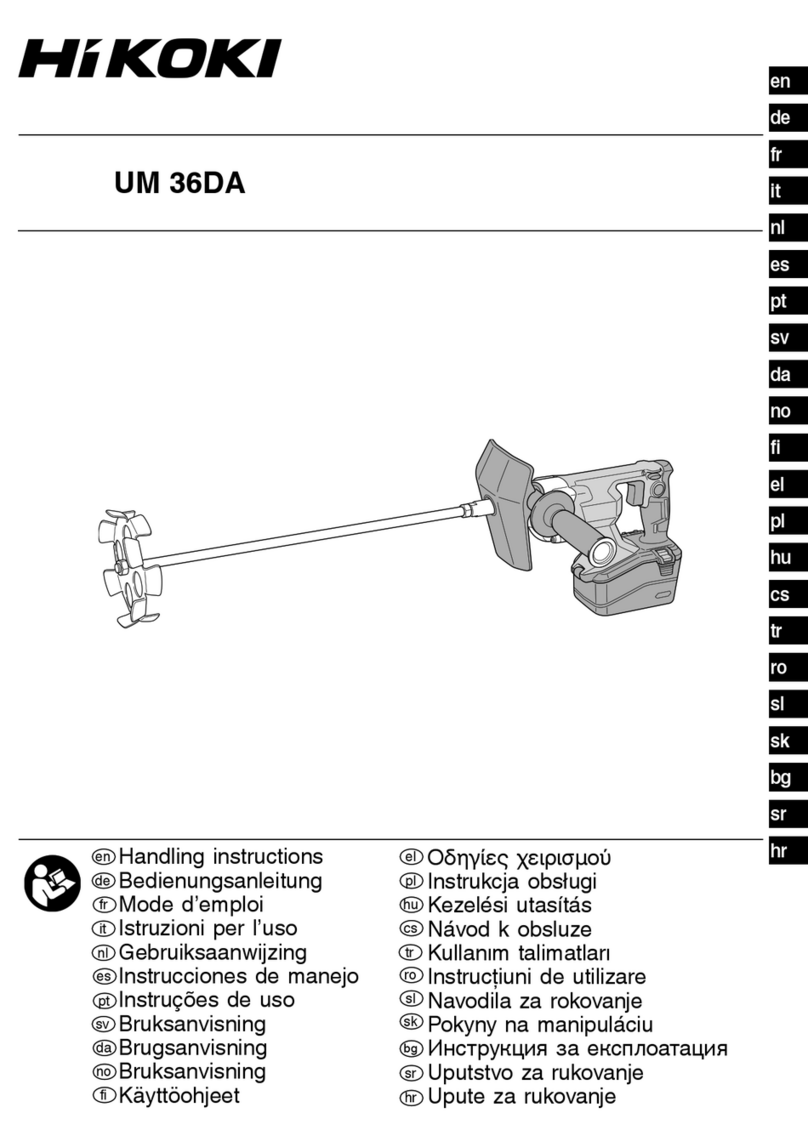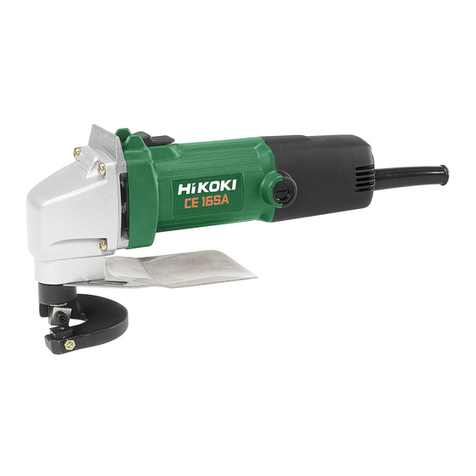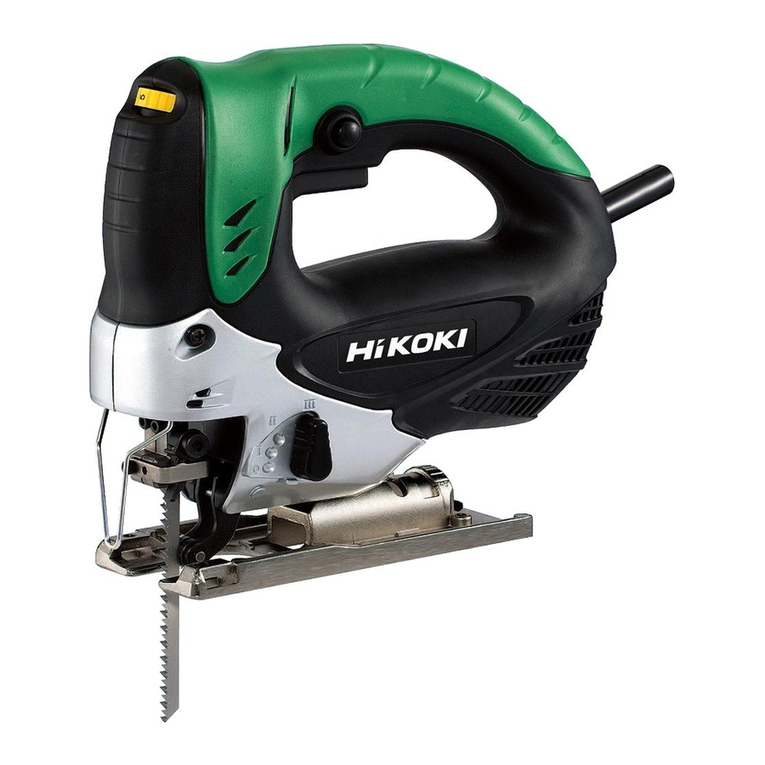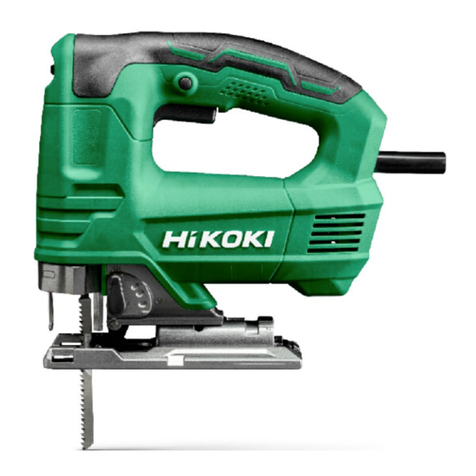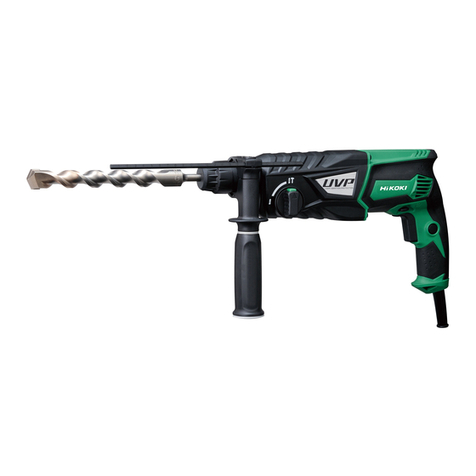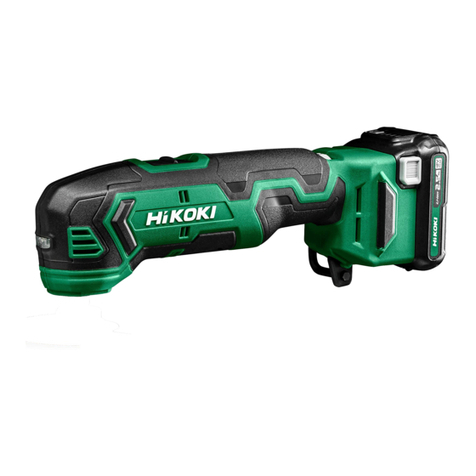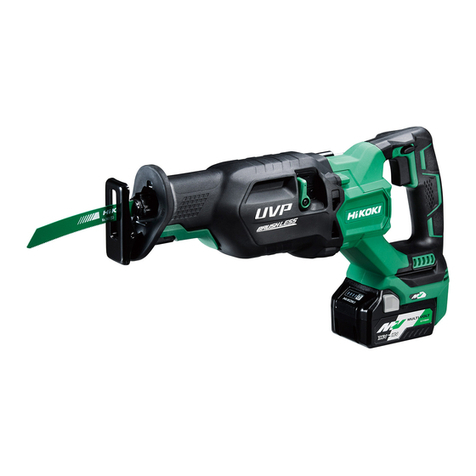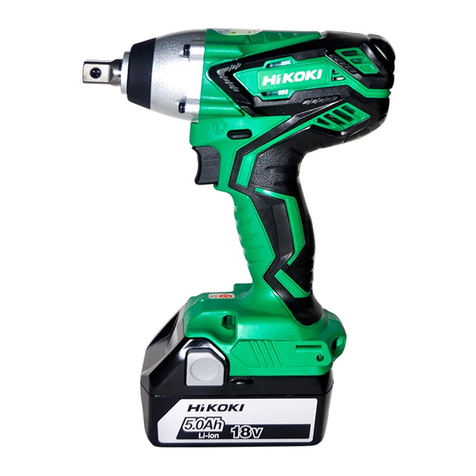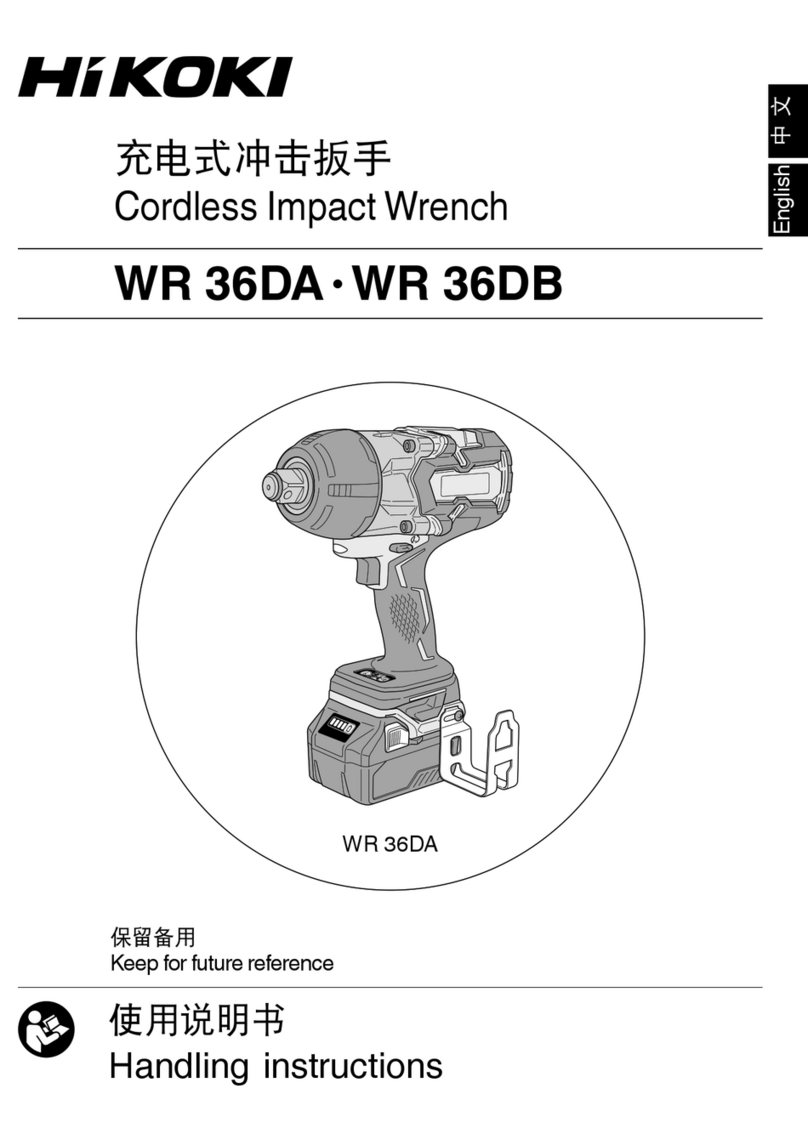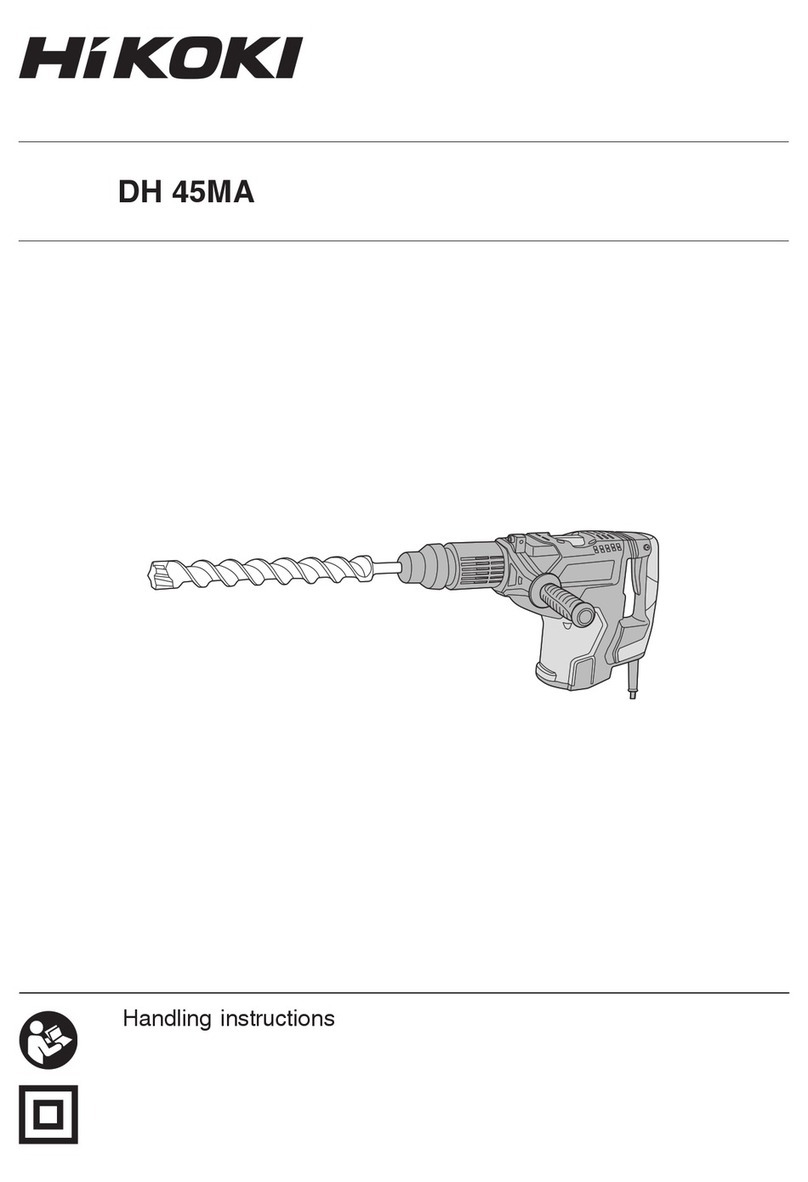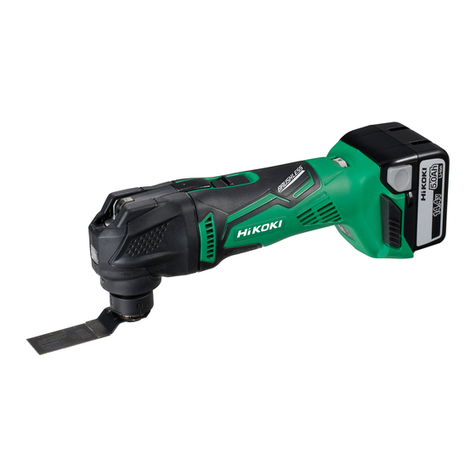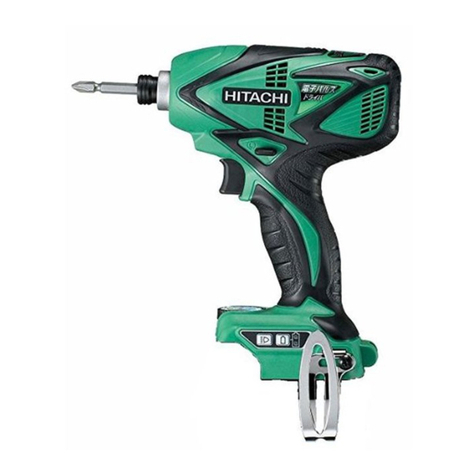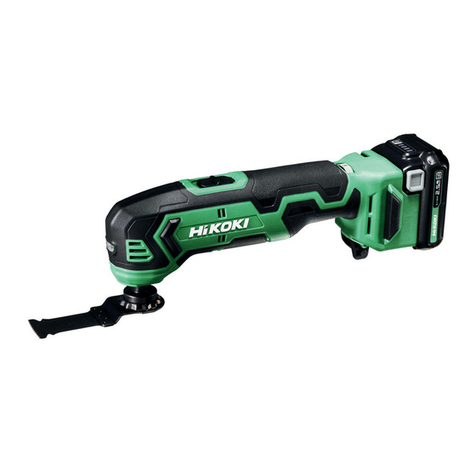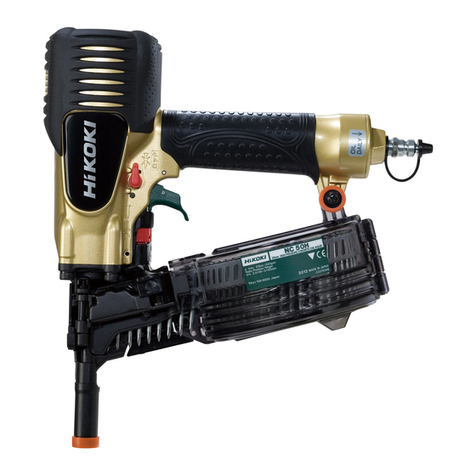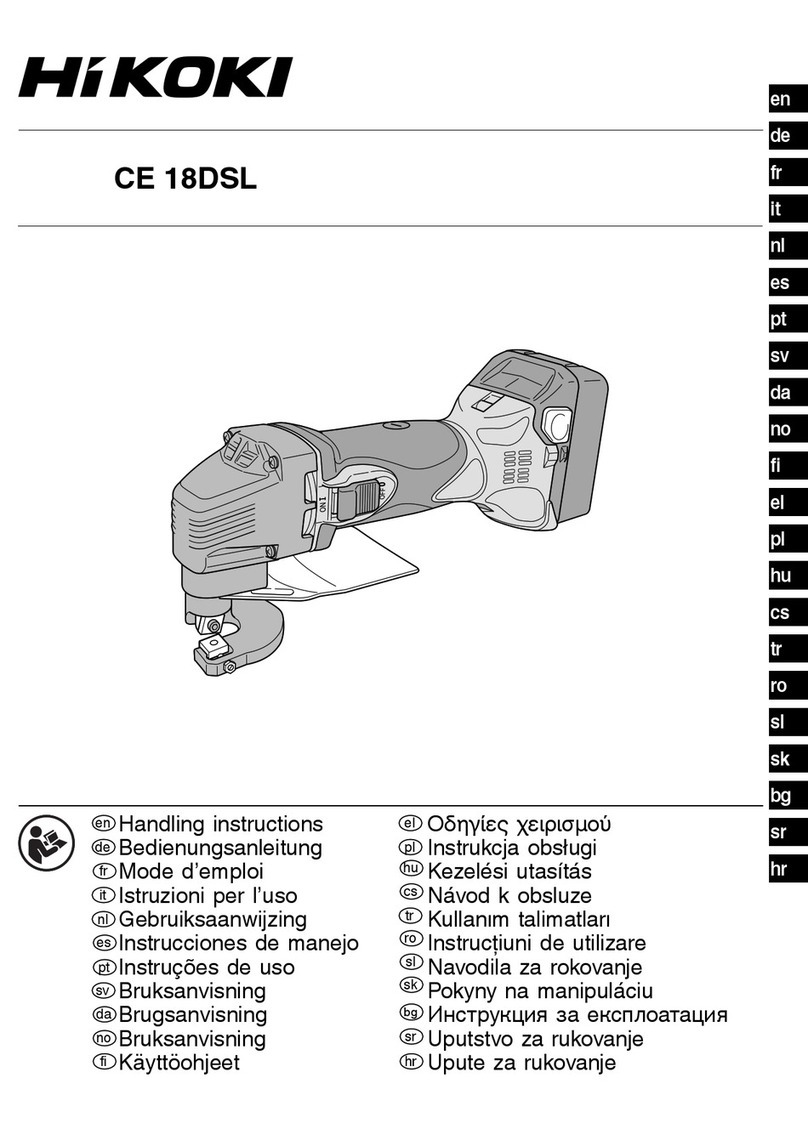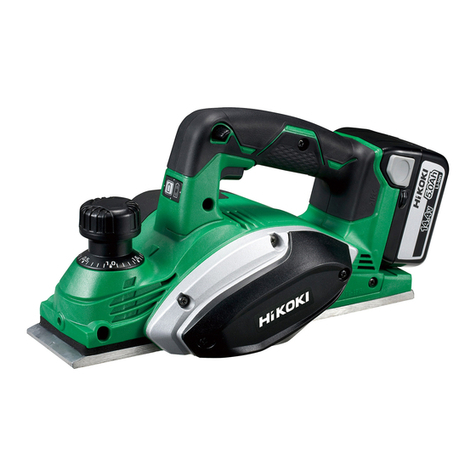
4
English
28. Do not stare into the LED light or expose your eyes
directly to the light from the LED light.
Continuously exposing your eyes to the light from the
LED light may result in eye injury.
29. Use a band saw blade that is suitable for the workpiece.
Also, prior to operation, use the band saw blade
circumferential speed setting dial to select a speed that
is suitable for the workpiece.
Cutting with a band saw blade or band saw blade
circumferential speed that is unsuitable for the workpiece
will decrease cutting precision, and may also result in
damage to the band saw blade.
30. As a basis for selecting a band saw blade with an
appropriate number of teeth/inch, select one that fits 2 or
more teeth within the thickness of the workpiece.
31. When replacing the band saw blade, be sure to switch
offthe power and remove the battery from the cordless
tool.
32. Use caution when changing or inspecting the band saw
blade as it may sometimes spring out.
33. Wear gloves when changing the band saw blade.
34. The band saw blade is hot immediately after operation.
Remove it only after it has cooled.
35. Verify that there are no nicks, cracks, or other
abnormalities on the band saw blade before installing it.
36. Wipe offany oil or grime adhering to the band saw blade
before installing it on the blade pulleys.
Additionally, wipe offany shavings or grime adhering to
the blade pulley rubbers.
If a band saw blade that has oil or grime adhering to it is
installed on the blade pulleys, the band saw blade may
slip or come loose.
37. When installing the band saw blade, do not twist or bend
its joint.
Doing so may damage the band saw blade.
38. Make sure the blade pulley cover is properly attached
before use.
If the band saw blade is damaged or comes loose, it may
result in injury.
39. Verify that the blade pulley cover and the band saw
blade are not in contact with each other.
40. If there is an abnormality with the blade pulley cover
and the switch lock won’t return to its original position,
promptly discontinue use and contact a HiKOKI
Authorized Service Center for repairs.
41. Use of a band saw blade other than one authorized
by the manufacture or a band saw blade with any
abnormalities may result in damage to the band saw
blade and/or injury.
42. When switching the power on, verify that the band saw
blade is not in contact with the workpiece to be cut or any
surrounding objects.
Failure to do so may result in the main unit being dropped
and/or injury.
43. In order to prevent accidents, when taking a break from
operation or after operation, be sure to switch offthe
power and remove the battery from the cordless tool.
44. If the band saw blade locks up while cutting, promptly
switch offthe power and stop it from running.
Failure to do so may result in damage to the band saw
blade.
45. After use, if the unit will not be used for a long period,
remove the band saw blade from the unit body and store
the band saw blade.
If the band saw blade is left installed in the unit body for
a long period, the lifespan of the band saw blade will
become shorter.
46. Do not use the product if the tool or the battery terminals
(battery mount) are deformed.
Installing the battery could cause a short circuit that
could result in smoke emission or ignition.
47. Keep the tool’s terminals (battery mount) free of swarf
and dust.
○Prior to use, make sure that swarf and dust have not
collected in the area of the terminals.
○During use, try to avoid swarf or dust on the tool from
falling on the battery.
○When suspending operation or after use, do not leave
the tool in an area where it may be exposed to falling
swarf or dust.
Doing so could cause a short circuit that could result in
smoke emission or ignition.
CAUTION ON LITHIUM-ION BATTERY
To extend the lifetime, the lithium-ion battery equips with the
protection function to stop the output.
In the cases of 1 to 3 described below, when using this
product, even if you are pulling the switch, the motor may
stop. This is not the trouble but the result of protection
function.
1. When the battery power remaining runs out, the motor
stops.
In such a case, charge it up immediately.
2. If the tool is overloaded, the motor may stop. In this
case, release the switch of tool and eliminate causes of
overloading. After that, you can use it again.
3. If the battery is overheated under overload work, the
battery power may stop.
In this case, stop using the battery and let the battery
cool. After that, you can use it again.
Furthermore, please heed the following warning and caution.
WARNING
In order to prevent any battery leakage, heat generation,
smoke emission, explosion and ignition beforehand, please
be sure to heed the following precautions.
1. Make sure that swarf and dust do not collect on the
battery.
○During work make sure that swarf and dust do not fall on
the battery.
○Make sure that any swarf and dust falling on the power
tool during work do not collect on the battery.
○Do not store an unused battery in a location exposed to
swarf and dust.
○Before storing a battery, remove any swarf and dust that
may adhere to it and do not store it together with metal
parts (screws, nails, etc.).
2. Do not pierce battery with a sharp object such as a
nail, strike with a hammer, step on, throw or subject the
battery to severe physical shock.
3. Do not use an apparently damaged or deformed battery.
4. Do not use the battery in reverse polarity.
5. Do not connect directly to an electrical outlets or car
cigarette lighter sockets.
6. Do not use the battery for a purpose other than those
specified.
7. If the battery charging fails to complete even when a
specified recharging time has elapsed, immediately stop
further recharging.
8. Do not put or subject the battery to high temperatures or
high pressure such as into a microwave oven, dryer, or
high pressure container.
9. Keep away from fire immediately when leakage or foul
odor are detected.
10. Do not use in a location where strong static electricity
generates.
11. If there is battery leakage, foul odor, heat generated,
discolored or deformed, or in any way appears abnormal
during use, recharging or storage, immediately remove it
from the equipment or battery charger, and stop use.
00BookCB18DBLKor.indb400BookCB18DBLKor.indb4 2022/06/0612:30:362022/06/0612:30:36
